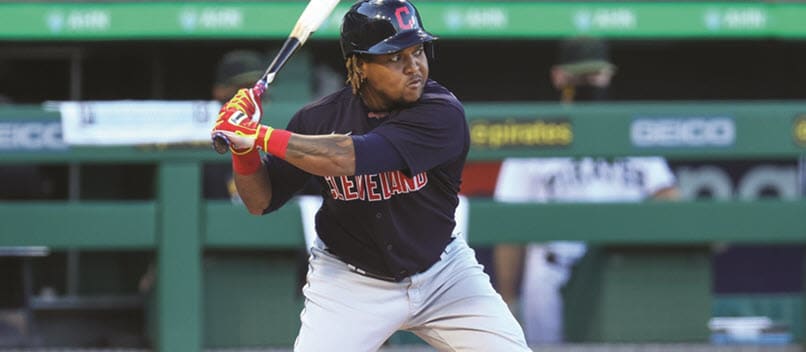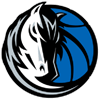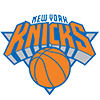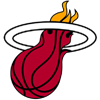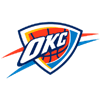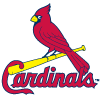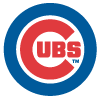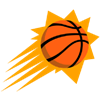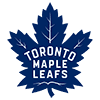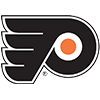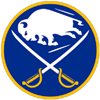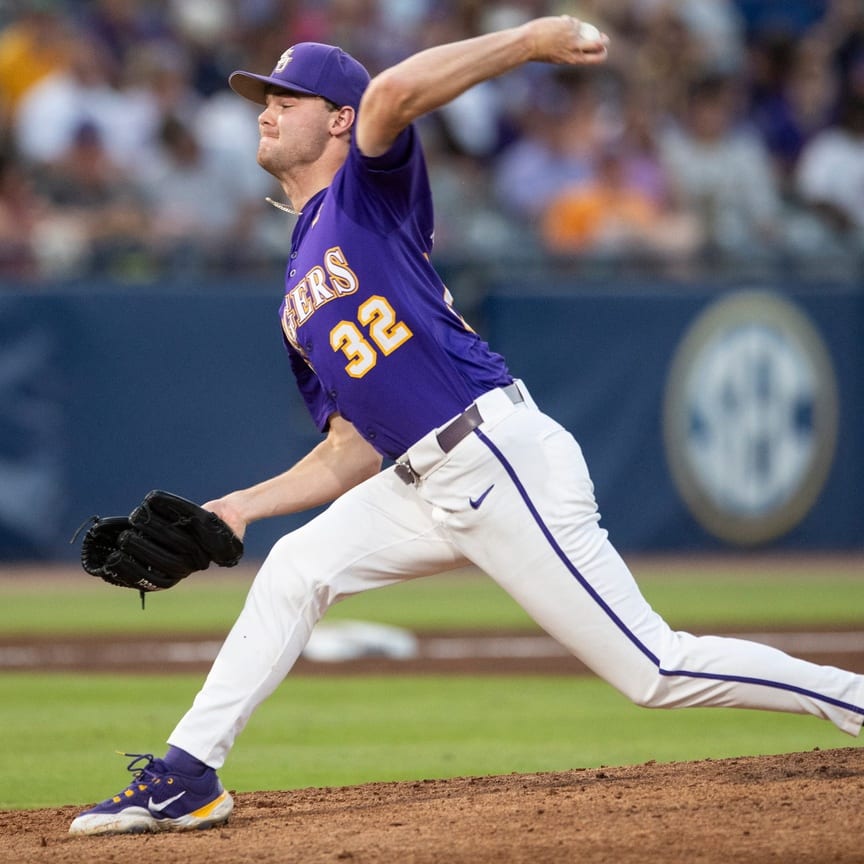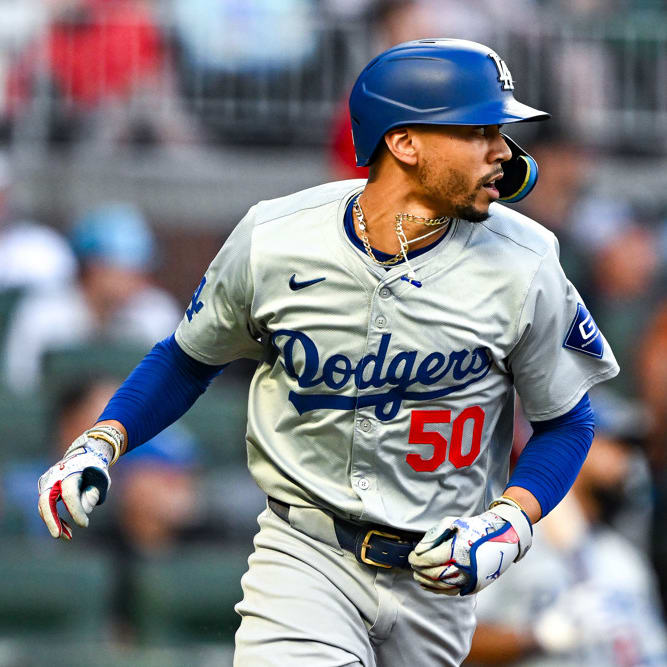I was away this weekend for a wedding, which means a) the positive vibes have evidently rubbed off on me, leaving this as a risers-heavy article, and b) the introductory section may be a bit briefer than normal. With full knowledge of the "nobody cares about your fantasy league" adage, I figured I'd go ahead and tell you all about one of my leagues, as I think it's led to a difficult buy/sell dilemma similar to one I'm sure many of you are dealing with.
The league in question is the RotoWire Staff Keeper League, a long-running 18-team dynasty league that features many of the writers whose names you see in these pages. I took over a team in respectable shape prior to last season, and after a successful draft and some early trades (including a MacKenzie Gore for Shohei Ohtani swap that left me feeling like a genius last year but which looks much more fair today), I was looking quite competitive down to the wire.
I bounced around the top tier throughout the year and was sitting in first as late as late August or even early September, but despite a late-season acquisition of Gerrit Cole and his expiring contract, my team faded down the stretch and finished in fourth. I had to empty most of my minor-league system to get to that point, and I didn't have much room under the salary cap to add a lot of new talent this winter, but I thought I had
I was away this weekend for a wedding, which means a) the positive vibes have evidently rubbed off on me, leaving this as a risers-heavy article, and b) the introductory section may be a bit briefer than normal. With full knowledge of the "nobody cares about your fantasy league" adage, I figured I'd go ahead and tell you all about one of my leagues, as I think it's led to a difficult buy/sell dilemma similar to one I'm sure many of you are dealing with.
The league in question is the RotoWire Staff Keeper League, a long-running 18-team dynasty league that features many of the writers whose names you see in these pages. I took over a team in respectable shape prior to last season, and after a successful draft and some early trades (including a MacKenzie Gore for Shohei Ohtani swap that left me feeling like a genius last year but which looks much more fair today), I was looking quite competitive down to the wire.
I bounced around the top tier throughout the year and was sitting in first as late as late August or even early September, but despite a late-season acquisition of Gerrit Cole and his expiring contract, my team faded down the stretch and finished in fourth. I had to empty most of my minor-league system to get to that point, and I didn't have much room under the salary cap to add a lot of new talent this winter, but I thought I had a good enough core including the aforementioned Ohtani, Bryce Harper and Vladimir Guerrero to make a run.
Things haven't gone great this season, but I was sitting a respectable seventh as recently as three weeks ago, with just 11 standings points separating me from the top spot. Since that date, however, I've had the worst team in the league by a wide margin, sending me plummeting down to 14th place. Both Harper and Guerrero have been the subject of trade inquiries over the last week.
I have to admit I began this introduction hoping that the process of writing everything out would bring some clarity, but it hasn't necessarily done that. Is the part of me that recognizes I could get more for those players if I give another team four months of their talents rather than just two a cold and rational part that I should be paying attention to, or is my desire to give up and sell swayed by bitterness and recency bias? Is the part of me that believes my team could turn things around just as quickly as it collapsed nothing more than blind optimism, or is it an expression of a sensible, big-picture mentality? Do I need to fire myself and install an interim manager to inspire such a turnaround, much as my Phillies just did with Joe Girardi?
If you know the answer to any of those questions, or if you're stuck with a similar dilemma, I'd love to hear about it in the comments below. For now, let's move on to a breakdown of some of the players who have helped fantasy teams move up and down the standings in recent weeks.
RISERS
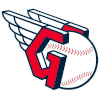 Jose Ramirez, 3B, Guardians: Is Ramirez now the best hitter in fantasy baseball? According to the recent Tout Wars Memorial Day mock draft, he deserves that title. Compared to consensus preseason top pick Trea Turner, he gives up eight points of batting average and four steals but has provided an extra eight homers, seven runs and nine RBI. We may be in the middle of the best season of Ramirez's eight-year career, as his 190 wRC+, the product of a .291/.393/.632 slash line, is easily a career high. His success seems to be driven by impeccable control of the zone, as his walk rate (14.0 percent) doubles his strikeout rate (7.0 percent). The combination of contact and power he's shown this season is incredible, as that strikeout rate leads all qualified hitters while his .341 ISO trails only Aaron Judge. The only players to have ever beaten both that strikeout rate and ISO in a full season are Rogers Hornsby, Lou Gehrig and Barry Bonds. He's only been getting better of late, striking out just a single time in his last 14 games while homering six times and slashing .320/.433/.840.
Jose Ramirez, 3B, Guardians: Is Ramirez now the best hitter in fantasy baseball? According to the recent Tout Wars Memorial Day mock draft, he deserves that title. Compared to consensus preseason top pick Trea Turner, he gives up eight points of batting average and four steals but has provided an extra eight homers, seven runs and nine RBI. We may be in the middle of the best season of Ramirez's eight-year career, as his 190 wRC+, the product of a .291/.393/.632 slash line, is easily a career high. His success seems to be driven by impeccable control of the zone, as his walk rate (14.0 percent) doubles his strikeout rate (7.0 percent). The combination of contact and power he's shown this season is incredible, as that strikeout rate leads all qualified hitters while his .341 ISO trails only Aaron Judge. The only players to have ever beaten both that strikeout rate and ISO in a full season are Rogers Hornsby, Lou Gehrig and Barry Bonds. He's only been getting better of late, striking out just a single time in his last 14 games while homering six times and slashing .320/.433/.840.
 Joc Pederson, OF, Giants: While Pederson's biggest impact on the news cycle over the past few weeks may have come when he got slapped by Tommy Pham due to a disagreement in the pair's fantasy football league, he's also having quite the impact during actual gameplay. After finishing each of the previous two seasons as a below-average hitter, he's looking like the latest veteran San Francisco success story this year, hitting .271/.349/.602 with 13 homers in 152 trips to the plate. His Statcast numbers suggest that he may even be getting unlucky, as that line comes with a .332 xBA and .723 xSLG, numbers that rank fourth and third, respectively, among qualified hitters. He's always hit the ball hard, but his 20.8 percent barrel rate is miles better than his previous career high of 11.8 percent. He's also making more contact than ever, striking out a career-low 19.1 percent of the time.
Joc Pederson, OF, Giants: While Pederson's biggest impact on the news cycle over the past few weeks may have come when he got slapped by Tommy Pham due to a disagreement in the pair's fantasy football league, he's also having quite the impact during actual gameplay. After finishing each of the previous two seasons as a below-average hitter, he's looking like the latest veteran San Francisco success story this year, hitting .271/.349/.602 with 13 homers in 152 trips to the plate. His Statcast numbers suggest that he may even be getting unlucky, as that line comes with a .332 xBA and .723 xSLG, numbers that rank fourth and third, respectively, among qualified hitters. He's always hit the ball hard, but his 20.8 percent barrel rate is miles better than his previous career high of 11.8 percent. He's also making more contact than ever, striking out a career-low 19.1 percent of the time.
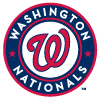 Nelson Cruz, DH, Nationals: It was all too easy to write Cruz off after his slow start to the season. While it's been remarkable to watch him remain productive at such a late stage in his career, everyone fades eventually, so seeing a 41-year-old post a .182/.268/.280 slash line through his first 150 plate appearances led to some fairly obvious conclusions. Such conclusions may have been premature, however. In his last 16 games, Cruz has slashed .418/.492/.564, raising his wRC+ to a nearly league-average 98. A .512 BABIP over that stretch suggests he's been getting very lucky, but he's also struck out just 17.2 percent of the time during that run while posting an 11.1 percent barrel rate, numbers which should reliably lead to a strong performance. Even during his cold streak to start the year, his underlying numbers were solid, as he had a 20.0 percent strikeout rate and a 10.6 percent barrel rate. Cruz's age does mean we shouldn't expect him to remain the same player he was over the past several seasons, but any fears of a complete collapse should now be assuaged.
Nelson Cruz, DH, Nationals: It was all too easy to write Cruz off after his slow start to the season. While it's been remarkable to watch him remain productive at such a late stage in his career, everyone fades eventually, so seeing a 41-year-old post a .182/.268/.280 slash line through his first 150 plate appearances led to some fairly obvious conclusions. Such conclusions may have been premature, however. In his last 16 games, Cruz has slashed .418/.492/.564, raising his wRC+ to a nearly league-average 98. A .512 BABIP over that stretch suggests he's been getting very lucky, but he's also struck out just 17.2 percent of the time during that run while posting an 11.1 percent barrel rate, numbers which should reliably lead to a strong performance. Even during his cold streak to start the year, his underlying numbers were solid, as he had a 20.0 percent strikeout rate and a 10.6 percent barrel rate. Cruz's age does mean we shouldn't expect him to remain the same player he was over the past several seasons, but any fears of a complete collapse should now be assuaged.
 Spencer Strider, SP, Atlanta: Strider had a very promising start to the season, but his role as a multi-inning reliever meant that his fantasy appeal was limited to deeper formats. He recorded a 2.22 ERA, 1.03 WHIP and 38.9 percent strikeout rate in 24.1 innings as a reliever, numbers which convinced Atlanta to move him into the rotation at the start of last week. He hasn't entirely convinced in his new role, walking seven batters across his first two starts, and he's not yet fully built up to a starter's workload, throwing a combined 8.1 frames, but he still has his strikeout stuff in longer stretches, whiffing 12 batters. He isn't a sure thing to bring all his success in the bullpen to a rotation role, as he was basically just a two-pitch reliever, using his changeup just 2.2 percent of the time. He's upped its usage to 12.6 percent in his two starts, however, and success with that pitch will determine whether he's a truly exciting fantasy weapon or an unreliable streamer.
Spencer Strider, SP, Atlanta: Strider had a very promising start to the season, but his role as a multi-inning reliever meant that his fantasy appeal was limited to deeper formats. He recorded a 2.22 ERA, 1.03 WHIP and 38.9 percent strikeout rate in 24.1 innings as a reliever, numbers which convinced Atlanta to move him into the rotation at the start of last week. He hasn't entirely convinced in his new role, walking seven batters across his first two starts, and he's not yet fully built up to a starter's workload, throwing a combined 8.1 frames, but he still has his strikeout stuff in longer stretches, whiffing 12 batters. He isn't a sure thing to bring all his success in the bullpen to a rotation role, as he was basically just a two-pitch reliever, using his changeup just 2.2 percent of the time. He's upped its usage to 12.6 percent in his two starts, however, and success with that pitch will determine whether he's a truly exciting fantasy weapon or an unreliable streamer.
 Edward Cabrera, SP, Marlins: Like Strider, Cabrera also stepped into a big-league rotation last week, and there's a case to be made that he's the more interesting young National League East righty. Unlike Strider, Cabrera did actually have big-league experience from prior to last week, though his seven starts last year didn't go particularly well, as he struggled to a 5.81 ERA and 15.8 percent walk rate. His four walks and two hit batsmen in his season debut Wednesday in Colorado were a concern, but they came with nine strikeouts and just one hit across six shutout innings, numbers which showcase his potential. While scouting reports do indicate Cabrera should eventually have average command, it looks like the walk issues may be inevitable at least for now, as he's walked 13.5 percent of the batters he's faced in 11 Triple-A starts split across the last two seasons. You can live with that alongside a 34.8 percent strikeout rate, however, a figure which makes him worth taking a risk on, especially considering the pitcher-friendly park he'll call home.
Edward Cabrera, SP, Marlins: Like Strider, Cabrera also stepped into a big-league rotation last week, and there's a case to be made that he's the more interesting young National League East righty. Unlike Strider, Cabrera did actually have big-league experience from prior to last week, though his seven starts last year didn't go particularly well, as he struggled to a 5.81 ERA and 15.8 percent walk rate. His four walks and two hit batsmen in his season debut Wednesday in Colorado were a concern, but they came with nine strikeouts and just one hit across six shutout innings, numbers which showcase his potential. While scouting reports do indicate Cabrera should eventually have average command, it looks like the walk issues may be inevitable at least for now, as he's walked 13.5 percent of the batters he's faced in 11 Triple-A starts split across the last two seasons. You can live with that alongside a 34.8 percent strikeout rate, however, a figure which makes him worth taking a risk on, especially considering the pitcher-friendly park he'll call home.
 Martin Perez, SP, Rangers: If you didn't give Perez a second thought during draft season, I can't blame you. Why expect anything interesting from a 10-year veteran who owned a career 4.71 ERA and 15.3 percent strikeout rate? In only one of his 10 seasons did he finish with an ERA better than 4.38, and that came all the way back in 2013. If you did happen to look his way as staff filler, however, you must be thrilled with the results thus far. While he won't maintain the 1.56 ERA he's recorded through his first 11 starts, that figure comes with a strong set of peripherals. His career-best 20.7 percent strikeout rate is still below average, but it's not all that far off and looks great next to a 5.9 percent walk rate (also a career best) and 54.7 percent groundball rate (his highest since 2015). Even those solid overall marks don't actually capture the pitcher he's been for most of the year. Toss out his first two outings and his ERA drops to 0.88, as he's allowed a total of six earned runs in his last nine starts.
Martin Perez, SP, Rangers: If you didn't give Perez a second thought during draft season, I can't blame you. Why expect anything interesting from a 10-year veteran who owned a career 4.71 ERA and 15.3 percent strikeout rate? In only one of his 10 seasons did he finish with an ERA better than 4.38, and that came all the way back in 2013. If you did happen to look his way as staff filler, however, you must be thrilled with the results thus far. While he won't maintain the 1.56 ERA he's recorded through his first 11 starts, that figure comes with a strong set of peripherals. His career-best 20.7 percent strikeout rate is still below average, but it's not all that far off and looks great next to a 5.9 percent walk rate (also a career best) and 54.7 percent groundball rate (his highest since 2015). Even those solid overall marks don't actually capture the pitcher he's been for most of the year. Toss out his first two outings and his ERA drops to 0.88, as he's allowed a total of six earned runs in his last nine starts.
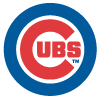 Christopher Morel, 2B/OF, Cubs: Morel didn't enter the year with much prospect hype and didn't appear to be all that close to a big-league promotion, but a hot start through 28 games for Double-A Tennessee earned him a call-up straight to the majors in mid-May. He's made the most of his opportunities and has quickly emerged as the Cubs' everyday leadoff man. That role alone gives him plenty of value, even in a mediocre lineup like Chicago's, but Morel's .291/.380/.468 slash line thus far suggests he has plenty of value in his own right. His scouting reports made him look like more of a Dylan Moore type, a utility player who has some power and speed to go along with his defensive versatility but significant contact concerns. Those concerns have yet to manifest, as he's striking out just 21.7 percent of the time, a number that goes great next to his 11.7 percent barrel rate. He's also added six steals in 20 games. He'll likely fall off somewhat as teams get a book on him, but there appears to be much more here than what past reports indicated.
Christopher Morel, 2B/OF, Cubs: Morel didn't enter the year with much prospect hype and didn't appear to be all that close to a big-league promotion, but a hot start through 28 games for Double-A Tennessee earned him a call-up straight to the majors in mid-May. He's made the most of his opportunities and has quickly emerged as the Cubs' everyday leadoff man. That role alone gives him plenty of value, even in a mediocre lineup like Chicago's, but Morel's .291/.380/.468 slash line thus far suggests he has plenty of value in his own right. His scouting reports made him look like more of a Dylan Moore type, a utility player who has some power and speed to go along with his defensive versatility but significant contact concerns. Those concerns have yet to manifest, as he's striking out just 21.7 percent of the time, a number that goes great next to his 11.7 percent barrel rate. He's also added six steals in 20 games. He'll likely fall off somewhat as teams get a book on him, but there appears to be much more here than what past reports indicated.
FALLERS
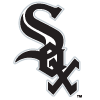 Yasmani Grandal, C, White Sox: This is now the second year in a row in which Grandal has carried a very poor batting average deep into the start of the season, but last year's performance gave much more reason to believe in a turnaround. Through June 15 of last year, he was hitting just .149, but he was also walking at an absurd 27.5 percent clip, while half of his 20 hits to that point had cleared the fence. Sure enough, his .132 BABIP up to that point normalized, and he went on to hit .324 the rest of the way. This season, his .163 average is much more worrisome. His walk rate is a merely good 13.4 percent, while his low 6.7 percent barrel rate has led to just two homers. There are still signs that he's getting unlucky, as his .213 slugging percentage is far below his .358 xSLG, but we're talking about a 33-year-old catcher here, so we can't rule out the fact that he may simply be getting old. Better luck and better performance should lead to better results going forward, but I wouldn't expect a repeat of last year's turnaround.
Yasmani Grandal, C, White Sox: This is now the second year in a row in which Grandal has carried a very poor batting average deep into the start of the season, but last year's performance gave much more reason to believe in a turnaround. Through June 15 of last year, he was hitting just .149, but he was also walking at an absurd 27.5 percent clip, while half of his 20 hits to that point had cleared the fence. Sure enough, his .132 BABIP up to that point normalized, and he went on to hit .324 the rest of the way. This season, his .163 average is much more worrisome. His walk rate is a merely good 13.4 percent, while his low 6.7 percent barrel rate has led to just two homers. There are still signs that he's getting unlucky, as his .213 slugging percentage is far below his .358 xSLG, but we're talking about a 33-year-old catcher here, so we can't rule out the fact that he may simply be getting old. Better luck and better performance should lead to better results going forward, but I wouldn't expect a repeat of last year's turnaround.
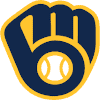 Lorenzo Cain, OF, Brewers: This looks like the end of the line for Cain as a productive regular. After going hitless across five games last week, he now owns a .169/.227/.223 slash line. Posting a line that poor requires at least a bit of bad luck, but it's not as if seeing him match his .210 xBA and .272 xSLG the rest of the way would satisfy those who drafted him. He doesn't have a single barrel all year, and his 24.1 percent strikeout rate is a career worst and sits well above his career 18.0 percent mark. In many ways, this has been coming for several seasons, as he hasn't been an above-average hitter in a full season since 2018, but his speed at least kept him as a viable fantasy option. Getting on base so infrequently this year has limited him to just two steals, and we shouldn't expect all that many even if he does start getting more opportunities, as his formerly elite sprint speed has now dropped into the merely good 73rd percentile.
Lorenzo Cain, OF, Brewers: This looks like the end of the line for Cain as a productive regular. After going hitless across five games last week, he now owns a .169/.227/.223 slash line. Posting a line that poor requires at least a bit of bad luck, but it's not as if seeing him match his .210 xBA and .272 xSLG the rest of the way would satisfy those who drafted him. He doesn't have a single barrel all year, and his 24.1 percent strikeout rate is a career worst and sits well above his career 18.0 percent mark. In many ways, this has been coming for several seasons, as he hasn't been an above-average hitter in a full season since 2018, but his speed at least kept him as a viable fantasy option. Getting on base so infrequently this year has limited him to just two steals, and we shouldn't expect all that many even if he does start getting more opportunities, as his formerly elite sprint speed has now dropped into the merely good 73rd percentile.
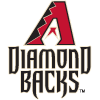 Merrill Kelly, SP, Diamondbacks: For a brief period at the start of this season, it looked as though Kelly might be suddenly turning into a genuinely interesting starter. His velocity was up over a tick and a half in his first outing of the year, and he averaged six strikeouts across his first three starts while allowing just a single run. He's quickly returned to nothing more than streamer status, however, and there's little reason to believe that will change any time soon. Since that brief three-start window, he's averaged less than four strikeouts over his last eight starts, posting a 4.74 ERA over that stretch. Things get even worse if you zoom in on his last four outings, a run in which he owns an 8.47 ERA and 11:13 K:BB. His hot start means he still owns a respectable 3.66 ERA, but I'd expect something much closer to his 4.28 xFIP or 4.48 SIERA going forward, and wouldn't feel obliged to hold onto him if someone more interesting comes along.
Merrill Kelly, SP, Diamondbacks: For a brief period at the start of this season, it looked as though Kelly might be suddenly turning into a genuinely interesting starter. His velocity was up over a tick and a half in his first outing of the year, and he averaged six strikeouts across his first three starts while allowing just a single run. He's quickly returned to nothing more than streamer status, however, and there's little reason to believe that will change any time soon. Since that brief three-start window, he's averaged less than four strikeouts over his last eight starts, posting a 4.74 ERA over that stretch. Things get even worse if you zoom in on his last four outings, a run in which he owns an 8.47 ERA and 11:13 K:BB. His hot start means he still owns a respectable 3.66 ERA, but I'd expect something much closer to his 4.28 xFIP or 4.48 SIERA going forward, and wouldn't feel obliged to hold onto him if someone more interesting comes along.


